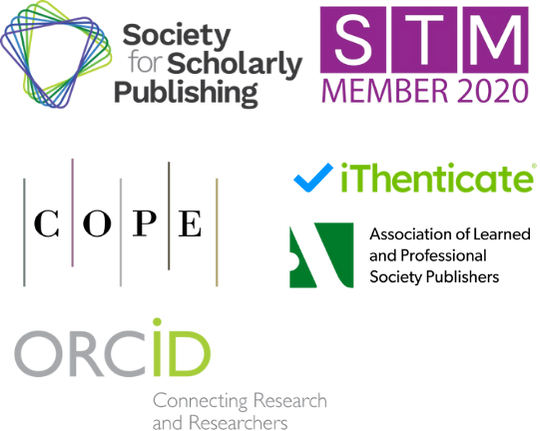Second Auxiliary Ligand Engineering in the Construction of Functional Copper Coordination Polymers
DOI:
https://doi.org/10.71222/y7ny7r47Keywords:
copper coordination polymers, second auxiliary ligands, ligand engineering, urease inhibition, catalysis, sustainable agriculture, structural modulationAbstract
Copper coordination polymers (Cu-CPs) have garnered significant attention due to their versatile structures and broad applications in catalysis, sensing, and agriculture. Among various design strategies, the engineering of second auxiliary ligands has emerged as a crucial approach to modulate the structural dimensionality, stability, and functional properties of Cu-CPs. By incorporating diverse ligand types such as aromatic carboxylates, bipyridines, and V-shaped heterocyclic compounds, researchers have achieved precise control over framework architectures and enhanced exposure of catalytically active sites. This review comprehensively summarizes recent advances in second auxiliary ligand design, their impact on the structural features of Cu-CPs, and the resulting improvements in performance, particularly in urease inhibition for sustainable agriculture and catalytic applications. Key synthetic and characterization techniques are also discussed. The insights provided herein aim to guide future developments toward multifunctional Cu-CPs with tailored properties for emerging technological needs.
References
1. G. Xie, W. Guo, Z. Fang, Z. Duan, X. Lang, D. Liu, G. Mei, Y. Zhai, X. Sun, and X. Lu, "Dual-metal sites drive tandem electrocatalytic CO₂ to C₂⁺ products," Angew. Chem., vol. 136, no. 47, p. e202412568, 2024, doi: 10.1002/ange.202412568.
2. L. Gao and A. Zhang, "Copper-instigated modulatory cell mortality mechanisms and progress in oncological treatment in-vestigations," Front. Immunol., vol. 14, p. 1236063, 2023, doi: 10.3389/fimmu.2023.1236063.
3. R. R. Tripathy, S. Singha, and S. Sarkar, "A review on bio-functional models of catechol oxidase probed by less explored first row transition metals," J. Coord. Chem., vol. 75, no. 15-16, pp. 1967–2017, 2022, doi: 10.1080/00958972.2022.2122053.
4. J. Adhikari, Synthesis, Characterization, and Antibacterial Evaluation of Metal Complexes of Surfactant Based Schiff Bases, M.S. thesis, Institute of Science & Technology, 2024.
5. F. Ding, C. Ma, W. L. Duan, and J. Luan, "Second auxiliary ligand induced two coppor-based coordination polymers and urease inhibition activity," J. Solid State Chem., vol. 331, p. 124537, 2024, doi: 10.1016/j.jssc.2023.124537.
6. K.-Y. Wang, et al., "Bioinspired framework catalysts: From enzyme immobilization to biomimetic catalysis," Chem. Rev., vol. 123, no. 9, pp. 5347–5420, 2023, doi: 10.1021/acs.chemrev.2c00879.
7. A. A. Shanty and P. V. Mohanan, "Synthesis, characterization, DNA binding, antibacterial, antidiabetic, molecular docking and DFT studies of Ni (II), Cu (II) and Zn (II) complexes derived from heterocyclic Schiff base," Inorg. Nano-Metal Chem., vol. 53, no. 12, pp. 1380–1395, 2023, doi: 10.1080/24701556.2021.1988977.
8. X. Liang, et al., "Immobilized enzymes in inorganic hybrid nanoflowers for biocatalytic and biosensing applications," J. Mater. Chem. B, vol. 9, no. 37, pp. 7597–7607, 2021, doi: 10.1039/D1TB01476E.
9. F. Ding, C. Y. Hung, J. K. Whalen, L. Wang, Z. Wei, L. Zhang et al., "Potential of chemical stabilizers to prolong urease inhibition in the soil–plant system," J. Plant Nutr. Soil Sci., vol. 185, no. 3, pp. 384–390, 2022, doi: 10.1002/jpln.202100314.
10. M. Li, et al., "Recent advances in Zn-MOFs and their derivatives for cancer therapeutic applications," Mater. Adv., vol. 4, no. 21, pp. 5050–5093, 2023, doi: 10.1039/D3MA00545C.
11. S. Aggarwal and S. Ikram, "A comprehensive review on bio‐mimicked multimolecular frameworks and supramolecules as scaffolds for enzyme immobilization," Biotechnol. Bioeng., vol. 120, no. 2, pp. 352–398, 2023, doi: 10.1002/bit.28282.
12. F. Ding, N. Su, C. Ma, B. Li, W. L. Duan, and J. Luan, "Fabrication of two novel two-dimensional copper-based coordination polymers regulated by the “V”-shaped second auxiliary ligands as high-efficiency urease inhibitors," Inorg. Chem. Commun., vol. 170, p. 113319, 2024, doi: 10.1016/j.inoche.2024.113319.
13. Y. Lee, et al., "Colorimetric biosensors: Advancements in nanomaterials and cutting-edge detection strategies," Biosensors, vol. 15, no. 6, p. 362, 2025, doi: 10.3390/bios15060362.
14. M. C. K. Sonaba, Efficacy of green copper nanoparticles (CuNPs) for the management of bacterial canker caused by Xanthomonas axono-podis pv. citri in acid lime (Citrus aurantifolia), M.S. thesis, Mahatma Phule Krishi Vidyapeeth, 2023.
15. N. Haroon and K. J. Stine, "Electrochemical detection of hormones using nanostructured electrodes," Coatings, vol. 13, no. 12, p. 2040, 2023, doi: 10.3390/coatings13122040.
16. V. Getautis, "Advanced organic molecules for new generation solar cells," in FIM 2022: Int. Conf. 'Functional Inorg. Mater. 2022': Abstract Book, Vilnius Univ. Press, 2022, doi: 10.15388/Proceedings.2022.29.
Downloads
Published
Issue
Section
License
Copyright (c) 2025 Clara J. Whitman (Author)

This work is licensed under a Creative Commons Attribution 4.0 International License.


